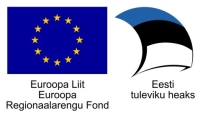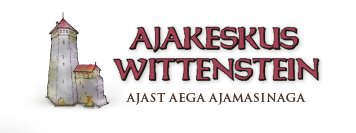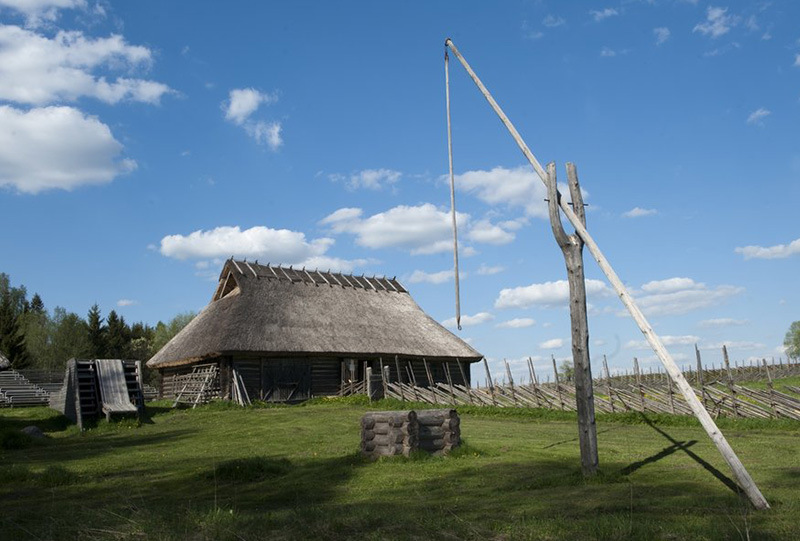Kõrvemaa landscape protection area
Kõrvemaa landscape protection area covers 204 square kilometers and is rich in protected plants. In addition to rare plants, Kõrvemaa is home to a number of rare bird species, such as the bald eagle, little frog eagle and black stork.
For those interested, hiking trails have been established to get to know the nature of Kõrvemaa: Simisalu-Matsimäe, Tammsaare (Vargamäe)-Järva-Madise and Noko-Kakerdaja lake.
Valgehobusemägi is the highest cliff in Kõrvemaa (107 meters) and in 1976 a 28-meter-high observation tower was erected there. According to legend, Kalevipoeg rested here from plowing fatigue, wolves sneaked up on his white horse and broke it down. The body of a horse became the White Horse Mountain, but the landscape is bumpy due to the unfinished plow.
More information: www.korvemaakaitseaala.ee.
A. H. Tammsaare Museum
The museum was opened in 1958 in Vetepere village, the birthplace of Anton Hansen-Tammsaare, Estonia’s most famous literary classic. The complex includes a residential building, a barn and a hayloft, a barn and the buildings of the barns. In these buildings, the living conditions of the time of “Truth and Justice” are exhibited. In the former residence there is an exhibition introducing the writer’s life and work.
Several events take place in the summer, open-air theater performances are very popular. Walking trails into the nature of Kõrvemaa start from the museum.
More information: www.tammsaare.albu.ee.
Paide Vallitorn – Ajakeskus Wittenstein
Interactive Time Center Wittenstein has been built in the tower located on PAIDE VALLIMÄE. Traveling through the tower’s nine floors and eight eras with the help of a time machine (elevator), the time traveler can learn about life in ancient times, sit at the same table with the bailiff of Järva County, pass a witch test and take a fun ride with a tsarist postman. Walk along at the Republic of Estonia city promenade on the first floor, and from the occupation floor, a stagnant train takes the time traveler to the newly independent Estonia. All this and much more is spiced up by sound and light effects, video programs and illusions.
More information: www.wittenstein.ee
Estonian Dairy Museum
The Dairy Museum was created in 1976 for the dairy farm of Estonia’s first joint milk service in Imavere. The museum was opened to visitors on July 14, 2001. The permanent exhibition covers the history of dairying in Estonia throughout the ages. Tasting Estonian dairy products, butter or icecream making workshop.
More information: www.piimandusmuuseum.ee.
Museum of the Järva-Jaani Fire Brigade
The museum of the fire brigade is located in the premises of a former spray shed at 24 Pikk street in Järva-Jaani. Firefighting history through the centuries is on display, including several restored fire engines. The attractiveness is enhanced by the possibility to order show events, where the main characters are the willing splashers. Soviet-era driving and transport machines are also gaining popularity in the old car shelter.
More information: www.jjts.ee.
Järvamaa manors
The manor buildings of Albu, Laupa, Roosna-Alliku and Sargvere are under restoration or have been restored, and the work is carried out based on the principle of restoring the interior close to the original. Currently, the estates are home to primary schools, which are open to tourists during the summer.
Järva-Madis home church
The single-aisled parish church of Järva-Madis is one of the smallest in Estonia. The raid portals of the temple are unique. In the interior, the triumphal arch group, altar and pulpit from the 17th century are particularly valuable. Käärkamber houses the only stone-carved piscina of the churches in Järva County – a holy vessel for washing hands.
More information: www.teelistekirikud.ekn.ee.
Endla nature reserve
The Norra-Oostrik springs area, located within the borders of Järva County, is considered to be the most water-rich spring area in all of Estonia (2.1 million liters per hour). In the untouched area there are abundant springs with different funnel sizes, depths and flow rates. The depth of the funnel of the Sopa spring, which is the source of the kilometer-long Sopa stream, has been measured to be 4.8 meters. It is the deepest source in Estonia. The spring of Võlling is one of the richest in water in Estonia. The springs of Vilbaste offer a unique sight: a cloud of sand rises up from the bottom of the spring for a few dozen centimeters, which, containing grains of spring lime, gives the water a greenish-blue color.
There are several rare and protected plants in the area – the beautiful golden shoe and brown nest root, marsh maidenhair carpet and others.
More information: www.endlakaitseaala.ee.
Türi
When you come to Türi, the spring capital, you will discover a beautiful garden city with a lot of greenery – parks, well-kept boulevards and the beauty of beautiful home gardens. A nice artificial lake or a canoe trip on the Pärnu River are suitable for vacation. It is worth entering the museum building, the church and visiting the craft fair and Resa Tiitsmaa’s studio. Kadri Tare, Külla Jürile and Estonia’s only sewing-themed restaurant Saara Kohvituba offer food and drink.
The Estonian Broadcasting Museum is located on Türi, which became more widely known after 1937, when a radio station with the most modern antenna mast in Europe was completed at that time. The museum’s permanent exhibitions and temporary exhibitions present the history and development of national broadcasting from the beginning of regular radio broadcasts in 1926 to the present day.
More information: www.tyri.ee.
Kilplaste theme park
The Kilplaste theme park is being built in the former Müüsler manor park, which represents a unique playground and sports field for children and young people. Most of the objects and attractions are related to the legends of the Shields.
More information: www.kilplased.ee


